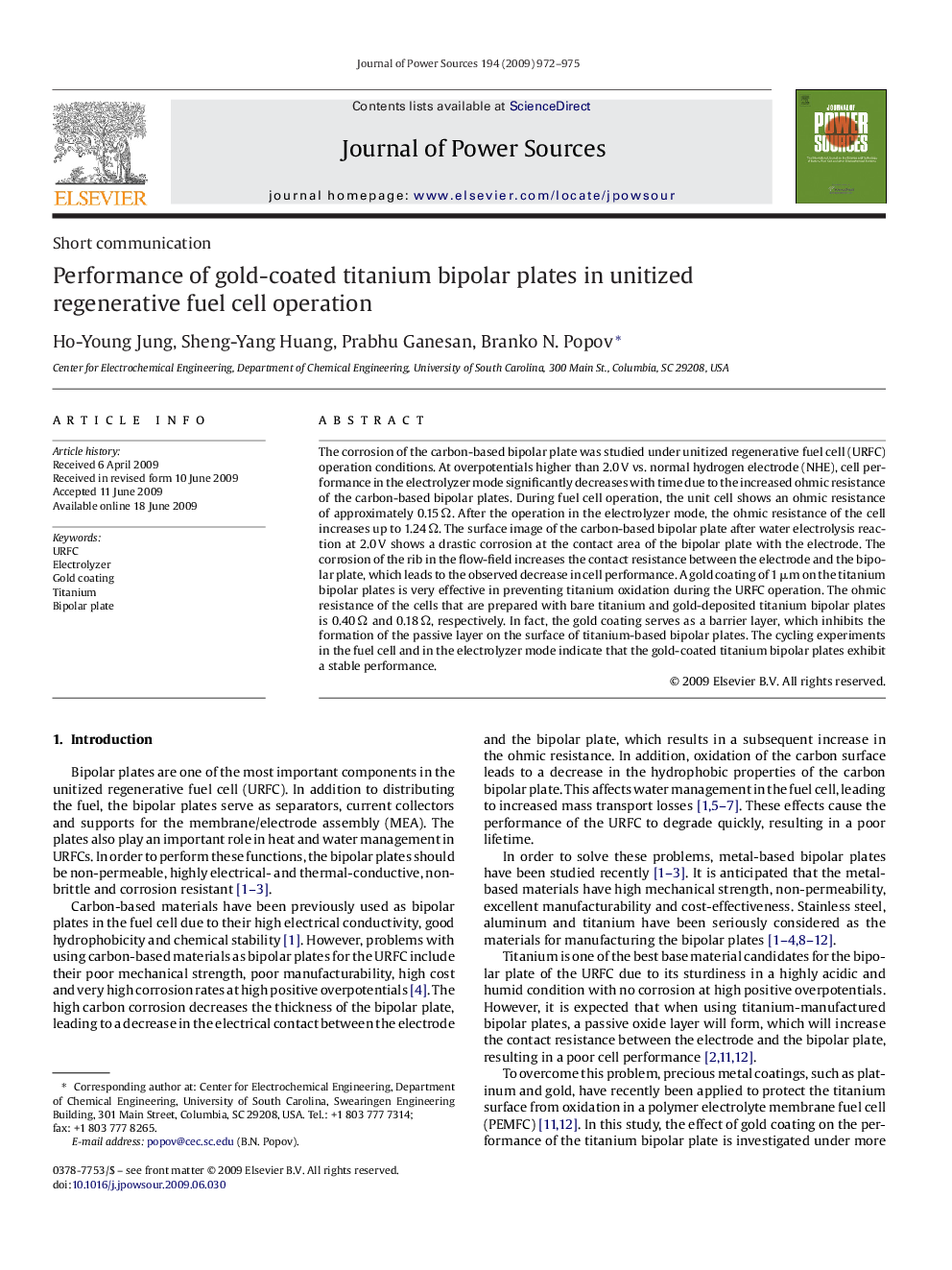| Article ID | Journal | Published Year | Pages | File Type |
|---|---|---|---|---|
| 1294053 | Journal of Power Sources | 2009 | 4 Pages |
The corrosion of the carbon-based bipolar plate was studied under unitized regenerative fuel cell (URFC) operation conditions. At overpotentials higher than 2.0 V vs. normal hydrogen electrode (NHE), cell performance in the electrolyzer mode significantly decreases with time due to the increased ohmic resistance of the carbon-based bipolar plates. During fuel cell operation, the unit cell shows an ohmic resistance of approximately 0.15 Ω. After the operation in the electrolyzer mode, the ohmic resistance of the cell increases up to 1.24 Ω. The surface image of the carbon-based bipolar plate after water electrolysis reaction at 2.0 V shows a drastic corrosion at the contact area of the bipolar plate with the electrode. The corrosion of the rib in the flow-field increases the contact resistance between the electrode and the bipolar plate, which leads to the observed decrease in cell performance. A gold coating of 1 μm on the titanium bipolar plates is very effective in preventing titanium oxidation during the URFC operation. The ohmic resistance of the cells that are prepared with bare titanium and gold-deposited titanium bipolar plates is 0.40 Ω and 0.18 Ω, respectively. In fact, the gold coating serves as a barrier layer, which inhibits the formation of the passive layer on the surface of titanium-based bipolar plates. The cycling experiments in the fuel cell and in the electrolyzer mode indicate that the gold-coated titanium bipolar plates exhibit a stable performance.
